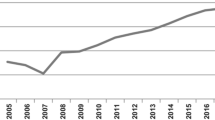Abstract
Intelligent energy management and control system (EMCS) in buildings offers an excellent means of reducing energy consumptions in HVAC systems while maintaining or improving indoor environmental conditions. This can be achieved through the use of computational intelligence and optimization. The paper thus proposes and evaluates a model-based optimization process for HVAC systems using evolutionary algorithm for optimization and artificial neural networks for modeling. The process can be integrated into the EMCS to perform several intelligent functions and achieve optimal whole-system performance. The proposed models and the optimization process are tested using data collected from an existing HVAC system. The testing results show that the models can capture very well the system performance, and the optimization process can reduce cooling energy consumption by about 11% when compared to the traditional operating strategies applied.
Similar content being viewed by others
References
ASHRAE (2009). ASHRAE Handbook—Fundamentals, Chapter 19. Atlanta, GA, USA: American Society of Heating, Refrigerating and Air-Conditioning Engineers.
ASHRAE (2010). ASHRAE Standard 62-2010, Ventilation for Acceptable Indoor Air Quality. Atlanta, GA, USA: American Society of Heating, Refrigerating and Air-Conditioning Engineers.
ASHRAE (2011). ASHRAE Handbook—HVAC Applications, Chapter 42. Atlanta, GA, USA: American Society of Heating, Refrigerating and Air-Conditioning Engineers.
Brandemuehl MJ, Gabel S, Andersen I (1993). A Toolkit for Secondary HVAC System Energy Calculation. Atlanta, GA, USA: American Society of Heating, Refrigerating and Air-Conditioning Engineers.
Deb K (2001). Multi-Objective Optimization Using Evolutionary Algorithms. New York: John Wiley & Sons.
Goldberg DE (1989). Genetic Algorithms in Search, Optimization, and Machine Learning. Reading, MA, USA: Addison-Wesley.
Hagras H (2008). Employing computational intelligence to generate more intelligent and energy efficient living spaces. International Journal of Automation and Computing, 5: 1–9.
Hydeman M, Webb N, Sreedharan P, Blanc S (2002). Development and testing of a reformulated regression-based electric chiller model. ASHRAE Transactions, 108(2): 1118–1127.
Kusiak A, Xu G (2012). Modeling and optimization of HVAC systems using a dynamic neural network. Energy, 42: 241–250.
Lee WY, House JM, Park C, Kelly GE (1996). Fault diagnosis of an air handling unit using artificial neural networks. ASHRAE Transactions, 102(1): 540–549.
Mossolly M, Ghali K, Ghaddar N (2009). Optimal control strategy for a multi-zone air conditioning system using a genetic algorithm. Energy, 34: 58–66.
Nassif N (2005). Optimization of HVAC control system using two-objective genetic algorithm. PhD Thesis, Ecole de technologie superieur, Montreal, Canada.
Nassif N (2012). Modeling and optimization of hvac systems using artificial intelligence approaches. Paper presented in ASHRAE Annual Conference, San Antonio, TX, USA.
Nassif N, Kajl S, Sabourin R (2005). Optimization of HVAC control system strategy using two-objective genetic algorithm. HVAC&R Research, 11: 459–486.
Seem JE (2007). Using intelligent data analysis to detect abnormal energy consumption in buildings. Energy and Buildings, 39: 52–58.
Wang S, Jin S (2000). Model-based optimal control of VAV air-conditioning system using genetic algorithm. Building and Environment, 35: 471–487.
Xu XH, Wang SW, Sun ZW, Xiao F (2009). A model-based optimal ventilation control strategy of multi-zone VAV air-conditioning systems using genetic algorithm. Applied Thermal Engineering, 29: 91–104.
Zheng GR, Zaheer-Uddin M (1996). Optimization of thermal processes in a variable air volume HVAC system. Energy, 21: 407–420.
Author information
Authors and Affiliations
Corresponding author
Rights and permissions
About this article
Cite this article
Nassif, N. Modeling and optimization of HVAC systems using artificial neural network and genetic algorithm. Build. Simul. 7, 237–245 (2014). https://doi.org/10.1007/s12273-013-0138-3
Received:
Revised:
Accepted:
Published:
Issue Date:
DOI: https://doi.org/10.1007/s12273-013-0138-3



